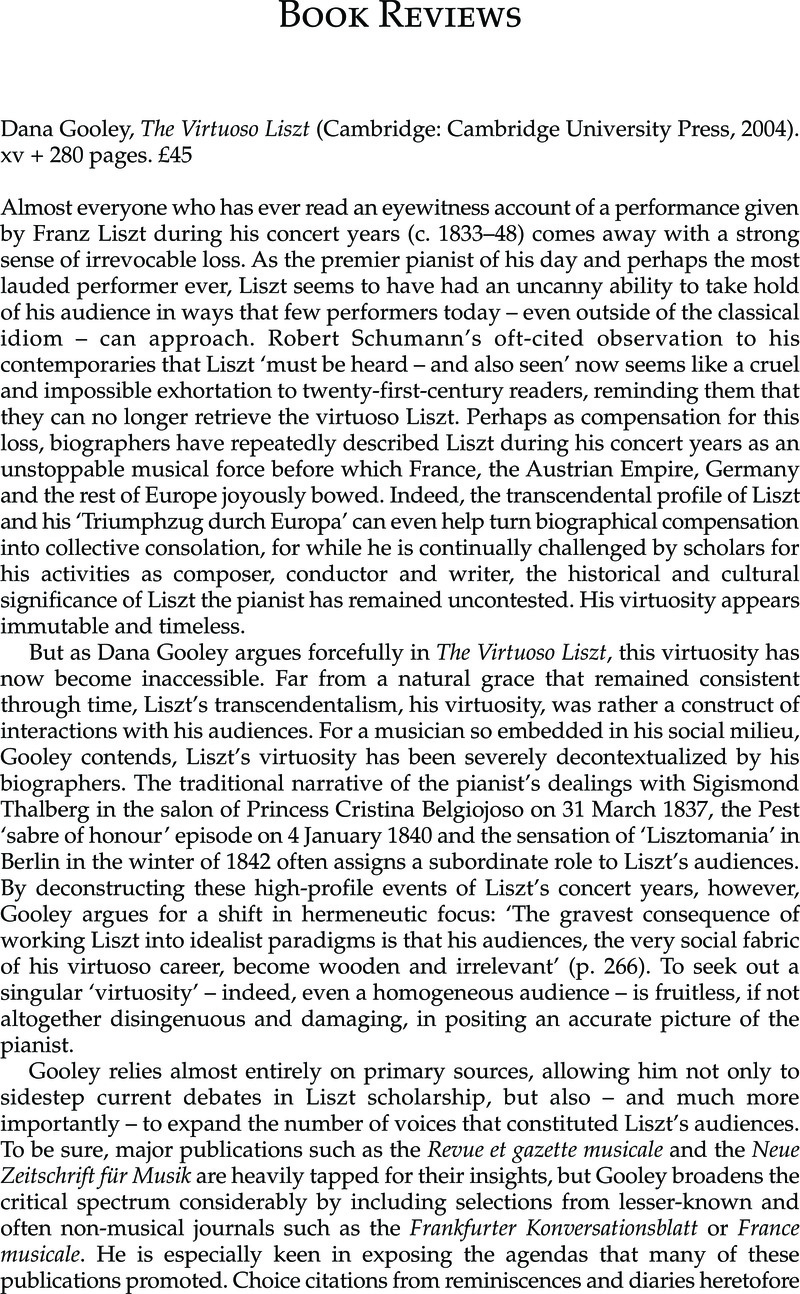No CrossRef data available.
Published online by Cambridge University Press: 13 April 2011

1 While Gooley's conclusions often challenge Alan Walker's handling of the same events in his Franz Liszt: The Virtuoso Years, 1811–1847 (Ithaca, NY: Cornell University Press, 1987)Google Scholar , they can hardly be construed as personal attacks. Rather, Gooley is attempting to recover images of the pianist that have been misrepresented in the Liszt biography since at least the time of Lina Ramann's 1880 biography ( Franz Liszt als Künstler und Mensch (Leipzig: Breitkopf & Härtel, vol. 2, 1887))Google Scholar . Walker's volume is simply the most recent mouthpiece of the inherited image of the virtuoso Liszt.
2 György Kroó discusses this plan in greater detail in ‘“La Ligne interieure”: The Years of Transformation and the “Album d'un voyageur”’, Studia Musicologica Academiae Scientiarum Hungaricae, 28/1–4 (1986): 249–60Google Scholar .
3 Although Gooley has little alternative, his use of Liszt's annotated 1881 edition for musical examples is potentially problematic (pp. 99–105), for it is highly likely that most of Liszt's embellishments were improvised on the spot and did not make their way into print.
4 Eckhardt, Mária, ‘Schubert's and Liszt's Friend and Poet: Franz von Schober’, Liszt Saeculum, 56/1 (1996): 13–19Google Scholar , esp. 14–16.
5 Gooley reports that ‘Liszt started playing the music of Bach, Handel, and Scarlatti in public for the first time during his visit to Berlin, and he hardly ever touched such repertory thereafter’ (p. 179). Liszt actually performed an E-minor fugue by Handel and the G-minor ‘Katzenfuge’ by Scarlatti on 14 May 1838 in Vienna (see Légany, Deszȍ, Franz Liszt: Unbekannte Presse und Briefe aus Wien 1822–1886 (Vienna: Böhlau, 1984): 44–5)Google Scholar . Gooley argues that Liszt programmed these works in Berlin specifically to win over the fierce music critic Ludwig Rellstab.